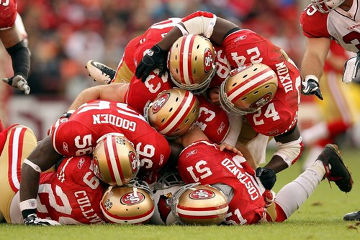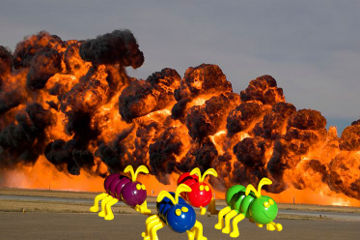What I’ve Learned:
“Electric bacteria: And you thought your 220V plug adapter was impressive.”
First they came to make our stoves electric, and I said nothing. Because I’m a terrible cook. I can’t even brown bagels.
Then they came to make our lawnmowers electric, and I said nothing. Because who can afford a yard these days?
Then they came to make our cars electric, and still I said nothing. Because Teslas are sexy, and only occasionally burst into flames.
But now we have electric bacteria, and there’s no one left to speak up. Presumably because they’ve been zapped by electric freaking bacteria. What’s next, nature? Chickenpox with tasers? Athlete’s foot fungus armed with bazookas? Napalm-spewing cooties?
Fear not, science fans. Unlike that Electro dude in the Spider-Man sequel, these “electric bacteria” aren’t out to fry humanity like a trillion tiny bug zappers. They’re just efficient little critters trying to cut out the middle man.
All living organisms need energy. We get ours in the form of coffee or cheese sticks or chicken cacciatore. Likewise, animals and plants ingest nutrients in various forms to get the oomph they need. Eating equals energy.
But once the grub goes down the gullet — or up the rootstalk — things get complicated. Nearly all organisms gain energy by transferring electrons from food molecules onto another molecule called ATP.
(No, not the tennis tour ATP. The only thing stored there is Roger Federer’s six thousand watches.)
ATP stands for adenosine triphosphate, possibly the most important bit of microscopic fluff in living cells, because it can hold onto electrons — and therefore energy — until they’re needed. Organisms spend a ridiculous amount of effort getting these electrons onto and off of ATP, using enzymes and cofactors and quite possibly David Blaine is involved — all because our cells can’t deal with bare electrons directly.
But some cells can.
Scientists have known for a while that certain bacterial species can gather energy from an electrical source — that is, a pool of electrons. No ATP needed; these microbes sip electrons like espresso and use them directly.
Dubbed “electric bacteria”, because they survive on raw current — rather than, say, raw currants — researchers believed they were relatively rare. But new experiments have jammed a proverbial fork into that outlet: electric bacteria aren’t rare; they’re everywhere.
Several new types of electron-munching microbes have been recently discovered. How? By jamming electrodes into the ground, turning on the juice (gently) and seeing what grows. Some bacteria in the lab can thrive on just the juice from a simple battery. No food. No water. No Chicken McCoenzymes. Just pure, unadulterated voltage. They’re like tiny little toasters, only alive and creepy and also terrible at browning bagels.
These weirdo electrical bacteria are interesting in a number of ways. Some live deep underground, slowly slurping electrons off the surrounding rocks. These may give us a hint of what primitive life on other planets might look like. They could also help us figure out the bare minimum energy cells need to survive. And they might be engineered to clean up biowaste or toxic spills, powering themselves with loose electrons as they work.
Some species even have filaments called nanowires that help regulate the electrons flowing in and out. These cells can link together, forming a bacterial bridge to transfer electrons several centimeters away. That’s not lightning shooting out of Jamie Foxx’s hands, maybe. But for teeny-ass microbes, it’s like Zeus firing thunderbolts at a bullseye on the moon.
So even if they won’t tase you, bro, don’t mess with electric bacteria. These crafty critters will shock you.




